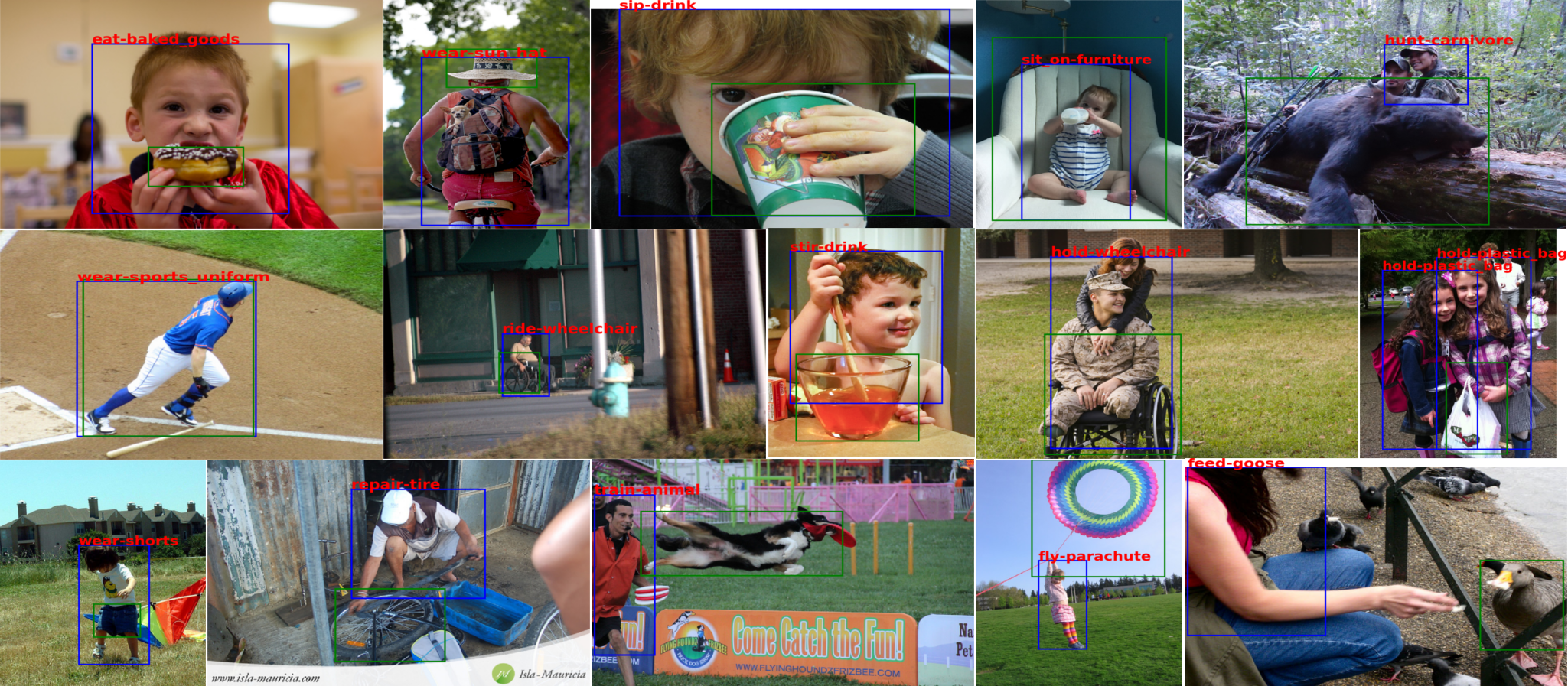Human-Object Interaction Detection
 |
Fig. 1: We detect all objects and humans in an image. This detector gives human features, and the corresponding labels. We consider all pairs of human-object and create union boxes. Our functional generalization module uses the word vectors for the human, the object class, geometric features, and human features from the object detector to produce the probability estimate over the predicates.
Abstract: We present an approach for detecting human-object
interactions (HOIs) in images, based on the idea that humans
interact with functionally similar objects in a similar manner.
The proposed model is simple and uses the visual features
of the human, relative spatial orientation of the human
and the object, and the knowledge that functionally similar
objects take part in similar interactions with humans. We
provide extensive experimental validation for our approach
and demonstrate state-of-the-art results for HOI detection.
On the HICO-Det dataset our method achieves a gain of
over 7% absolute points in mean average precision (mAP)
over published literature and even a gain of over 2.5%
absolute mAP over contemporary work. We also show that our
approach leads to significant performance gains for zero-shot HOI
detection in the seen object setting. We further
demonstrate that using a generic object detector, our model
can generalize to interactions involving previously unseen
objects.
Results
We highlight the results obtained in the unseen object setting in the following figure.
 |
Fig. 2: This figure shows some detections made by our model in the unseen object setting.
 |
Fig. 3: This figure shows some detections made by our model for objects outside the HICO-Det dataset.
Paper
Our paper is available here.
If you found the paper useful, please consider citing our paper using the bibtex:
@article{bansal2019detecting,
title={Detecting Human-Object Interactions via Functional Generalization},
author={Bansal, Ankan and Rambhatla, Sai Saketh and Shrivastava, Abhinav and Chellappa,
Rama},
journal={Thirty-Fourth AAAI Conference on Artificial Intelligence},
year={2020},
url={https://arxiv.org/pdf/1904.03181.pdf}
}
@article{bansal2020spatial,
title={Spatial Priming for Detecting Human-Object Interactions},
author={Bansal, Ankan and Rambhatla, Sai Saketh and Shrivastava, Abhinav and Chellappa, Rama},
journal={arXiv preprint arXiv:2004.04851},
year={2020},
url={https://arxiv.org/pdf/2004.04851.pdf}
}
Acknowledgments
This project was supported by the Intelligence Advanced Research Projects Activity (IARPA) via Department of InteriorInterior Business Center (DOIIBC) contract number D17PC00345. The U.S. Government is authorized to reproduce and distribute reprints for Governmental purposes not withstanding any copyright annotation thereon. Disclaimer: The views and conclusions contained herein are those of the authors and should not be interpreted as necessarily representing the official policies or endorsements, either expressed or implied of IARPA, DOI/IBC or the U.S. Government.